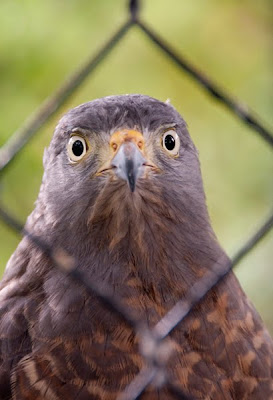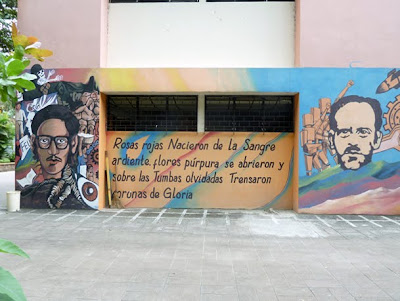 My schedule in San Salvador was sort of tight, and I didn’t feel I had time to get out into the country, as I would have liked. But on my free days I wanted to find some peace, and also to find some birds, so I explored some of the city parks. One place I enjoyed a lot was the zoo—the Parque Zoológico. One Saturday I went there and just absorbed the peace and green of the place. While it’s not big, like the Jardín Botánico it offers some tranquility and a place to recharge one’s batteries. Not surprisingly, it’s very popular with families, and also with couples looking for a couple of hours to be on their own.
My schedule in San Salvador was sort of tight, and I didn’t feel I had time to get out into the country, as I would have liked. But on my free days I wanted to find some peace, and also to find some birds, so I explored some of the city parks. One place I enjoyed a lot was the zoo—the Parque Zoológico. One Saturday I went there and just absorbed the peace and green of the place. While it’s not big, like the Jardín Botánico it offers some tranquility and a place to recharge one’s batteries. Not surprisingly, it’s very popular with families, and also with couples looking for a couple of hours to be on their own. They have an extensive collection of monkeys. While some of the cages were old-fashioned and small in my view, there are several monkey islands that I liked a lot. They gave sufficient space and habitat for the monkeys to express their social behavior.
They also have a nice collection of birds—the large bird enclosures are spaced among thickets of trees and shrubs. And of course, the caged birds—and their food—attract some other birds as well.
The afternoon I spent there was particularly enjoyable because I had a question about a bird I had seen among the trees of the lagoon where some of the monkeys are (for the birders in the group, the bird in question is Melanerpes aurifrons—Golden-fronted Woodpecker. I fully expected to see this bird, but then saw a couple that had red crowns and napes like our M. carolinus—Red-bellied Woodpecker. Really, it would have been hard to separate these birds from Red-bellies). When I asked some of the grounds crew for help, they directed me to the administration building. The result was a lengthy and enjoyable discussion with Tomás Alberto Chávez, a personable and engaging biologist who turned out to be the director of the zoo, and Ana Vásquez, who’s in charge of the birds. Later I had a lengthy discussion with Esmeralda Martínez, who works with reptiles in the zoo but is very knowledgeable about birds. A really enjoyable afternoon.
(By the way, my question about the woodpeckers was resolved when I returned to my room an read in a Peterson guide that the narrow-banded sub-species of M. aurifrons looks like M. carolinus.)
I didn’t do much serious photography at the zoo—though I think one could. Here are a few images:







































